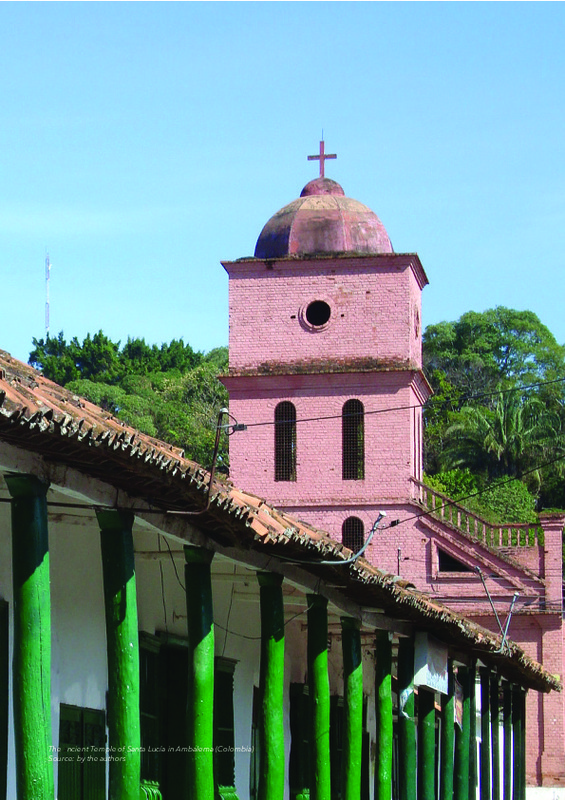JavaScript is disabled for your browser. Some features of this site may not work without it.
Buscar en RiuNet
Listar
Mi cuenta
Estadísticas
Ayuda RiuNet
Admin. UPV
Evaluation of the Structural Stability of an Octagonal Dome with Meridional Cracks. Case Study: Temple of Santa Lucia, Ambalema, Colombia
Mostrar el registro sencillo del ítem
Ficheros en el ítem
| dc.contributor.author | Olmedo Montoya, Jorge
|
es_ES |
| dc.contributor.author | Niglio, Olimpia
|
es_ES |
| dc.contributor.author | Brigith Romero, Karol
|
es_ES |
| dc.coverage.spatial | east=-74.76565868227846; north=4.782047150192201; name=Ambalema, Tolima, Colòmbia | |
| dc.date.accessioned | 2018-01-04T11:13:25Z | |
| dc.date.available | 2018-01-04T11:13:25Z | |
| dc.date.issued | 2017-12-21 | |
| dc.identifier.uri | http://hdl.handle.net/10251/93924 | |
| dc.description.abstract | [EN] This work performed a comparative analysis between the construction process carried out when building the dome at the Temple of Santa Lucía, in Ambalema-Colombia and the typical process of an octagonal dome. Additionally, the structural stability is assessed of the dome of the case study against service and dynamic loads. To compare with the case study, known domes were taken as examples from structures in Italy and Spain. The analysis includes a study on the dome’s geometry and the constructive errors found. Methodology: The dome’s stability was evaluated through structural analysis software for which the dome was simplified into a system of four articulated arches. Conclusions: As a result, it was found that the dome of the temple of Santa Lucía does not have a system to counteract lateral thrusts (a drum or its similar), which permitted the appearance and widening of meridional cracks. These cracks propagate from the base to the crown, but do not compromise the structure’s stability for service loads. The analysis for seismic loads indicates that the dome is at risk of collapse upon seismic events, even of moderate magnitudes. Originality: The study is aimed at architects and engineers interested in the theme of restoration of historical structures. | es_ES |
| dc.language | Inglés | es_ES |
| dc.publisher | Universitat Politècnica de València | |
| dc.relation.ispartof | VITRUVIO - International Journal of Architectural Technology and Sustainability | |
| dc.rights | Reconocimiento - No comercial (by-nc) | es_ES |
| dc.subject | Ambalema | es_ES |
| dc.subject | Colombia | es_ES |
| dc.subject | Temple of Santa Lucía | es_ES |
| dc.subject | Dome | es_ES |
| dc.subject | Historical Heritage | es_ES |
| dc.subject | Structural Stability | es_ES |
| dc.title | Evaluation of the Structural Stability of an Octagonal Dome with Meridional Cracks. Case Study: Temple of Santa Lucia, Ambalema, Colombia | es_ES |
| dc.type | Artículo | es_ES |
| dc.date.updated | 2018-01-04T10:30:53Z | |
| dc.identifier.doi | 10.4995/vitruvio-ijats.2017.8629 | |
| dc.rights.accessRights | Abierto | es_ES |
| dc.description.bibliographicCitation | Olmedo Montoya, J.; Niglio, O.; Brigith Romero, K. (2017). Evaluation of the Structural Stability of an Octagonal Dome with Meridional Cracks. Case Study: Temple of Santa Lucia, Ambalema, Colombia. VITRUVIO - International Journal of Architectural Technology and Sustainability. 2(2):25-33. https://doi.org/10.4995/vitruvio-ijats.2017.8629 | es_ES |
| dc.description.accrualMethod | SWORD | es_ES |
| dc.relation.publisherversion | https://doi.org/10.4995/vitruvio-ijats.2017.8629 | es_ES |
| dc.description.upvformatpinicio | 25 | es_ES |
| dc.description.upvformatpfin | 33 | es_ES |
| dc.type.version | info:eu-repo/semantics/publishedVersion | es_ES |
| dc.description.volume | 2 | |
| dc.description.issue | 2 | |
| dc.identifier.eissn | 2444-9091 | |
| dc.description.references | Asociación Colombiana de Ingeniería Sísmica AIS. Reglamento colombiano de Construcción Sismo Resistente NSR-10. 2012. Colombia, A-27p. 2010. | es_ES |
| dc.description.references | Dahmen, J.F.D., and Ochsendorf, J.A. Modern earth buildings: materials, engineering, construction and applications. En: Earth masonry structures: arches, vaults and domes. Canada and MIT, USA. University of British Columbia. pp. 427-460. 2012, | es_ES |
| dc.description.references | Foraboschi, P. (2014). Resisting system and failure modes of masonry domes. Engineering Failure Analysis, 44, 315-337. doi:10.1016/j.engfailanal.2014.05.005 | es_ES |
| dc.description.references | Huerta Fernández, S. Mecánica de las bóvedas de fábrica: el enfoque del equilibrio. En: "El material pétreo y sus fábricas en el patrimonio". Consorcio de Santiago. Santiago, Espa-a. pp. 157-192. 2005. | es_ES |
| dc.description.references | Huerta, S. Arcos, bóvedas y cúpulas. Geometría y equilibrio en el cálculo tradicional de estructuras de fábrica. Madrid: Instituto Juan Herrera. 2004. | es_ES |
| dc.description.references | Hurtado Valdez, P. Estructuras Abovedadas de Quincha en el Virreinato de Perú. In: Dialnet [on line]. 2016. [Date consulted: 03 February 2016]. Available in: López Manzanares, G. La forma ideal de las cúpulas: el ensayo de Bouguer. In: Congreso Nacional de Historia de la Construcción (Tercer, 2000, Sevilla). Espa-a. 2000. | es_ES |
| dc.description.references | López Mozo, A. La huella de El Escorial en las cúpulas espa-olas de finales del siglo XVI. El caso de la Capilla Cerralbo de Ciudad Rodrigo. In: Informes de la construcción. 65(2): 95-109, Espa-a 2013. | es_ES |
| dc.description.references | Pavlovic, M., Reccia, E., & Cecchi, A. (2014). A Procedure to Investigate the Collapse Behavior of Masonry Domes: Some Meaningful Cases. International Journal of Architectural Heritage, 10(1), 67-83. doi:10.1080/15583058.2014.951797 | es_ES |
| dc.description.references | Pérez, J. C., and Pie De Causa, B. Cúpulas de crucero en templos de la provincia de Alicante (s.XVII-XIX): construcción y geometría. En: Informes de la Construcción. 67 (538). 2015. | es_ES |
| dc.description.references | Requena Ruiz, I. Análisis de Tipologías Estructurales Bóveda, Lámina, Cúpula y Paraboloide. (n.d.). | es_ES |
| dc.description.references | Soler-Verdú, R., & Soler-Estrela, A. (2015). Tipología de cúpulas tabicadas. Geometría y construcción en la Valencia del siglo XVIII. Informes de la Construcción, 67(538), e078. doi:10.3989/ic.13.180 | es_ES |








